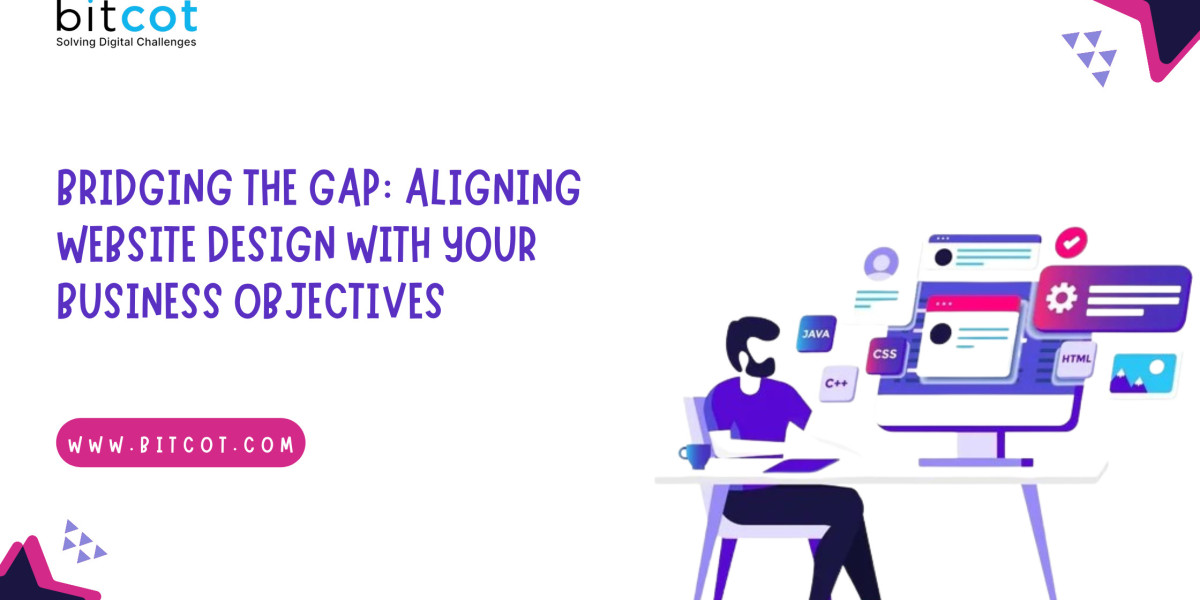In today's digital-first landscape, your website has become the central hub of your organization's online presence – serving as the primary interface between your brand and your customers. As such, the design and functionality of your website play a critical role in determining your ability to achieve key business objectives, from lead generation and e-commerce sales to brand awareness and customer engagement.
However, far too often, we see businesses approach website design as a purely aesthetic exercise, prioritizing visual appeal over strategic alignment with their overarching business goals. This disconnect can have severe consequences, resulting in websites that fail to convert visitors, frustrate users, and ultimately undermine the company's digital success.
To break free from this trap, organizations must adopt a more holistic, business-centric approach to website design – one that bridges the gap between creative vision and tangible, measurable outcomes. By aligning your website design directly with your core business objectives, you can create an online presence that not only captivates your audience but also drives real, bottom-line impact.
Defining Your Website's Core Purpose
The first step in aligning your website design with your business objectives is to clearly define the primary purpose and intended outcomes of your online presence. Are you aiming to generate high-quality leads for your sales team? Facilitate seamless e-commerce transactions. Elevate brand awareness and thought leadership in your industry.
Establishing this strategic foundation is crucial, as it will inform every subsequent decision made throughout the website design and development process. For example, if your primary goal is lead generation, your website design should prioritize clear calls-to-action, intuitive navigation, and easily accessible lead capture forms. Conversely, if you're focused on e-commerce, your design should emphasize a frictionless shopping experience, robust product visualization, and secure payment processing.
By keeping your core business objectives at the forefront, you can ensure that your website design remains firmly grounded in reality, rather than falling into the trap of creating something aesthetically pleasing but functionally disconnected from your strategic imperatives.
Putting the User Experience First
Of course, defining your business objectives is only half the battle. To truly bridge the gap between design and outcomes, you must also place the user experience at the heart of your website development efforts.
After all, no matter how beautifully crafted your website may be, if it fails to resonate with your target audience and address their specific needs and pain points, it will inevitably fall short of driving the desired business impact. This is why conducting thorough user research, developing detailed user personas, and rigorously testing and iterating on the user interface are all critical steps in the website design process.
By deeply understanding your customers' behaviors, preferences, and pain points, you can craft a website experience that not only aligns with your business objectives but also delights and engages your audience. This could involve anything from intuitive navigation and personalized content recommendations to seamless form flows and lightning-fast page load times.
Ultimately, the goal is to create a website that serves as a true extension of your brand, seamlessly guiding users through their journey and empowering them to take the actions you want them to take – whether that's making a purchase, submitting a lead form, or consuming your thought leadership content.
Leveraging Data-Driven Insights
Of course, aligning website design with business objectives is not a one-time event, but rather an ongoing process of continuous improvement and optimization. This is where the power of data-driven insights comes into play.
By implementing robust website analytics, heat mapping, A/B testing, and other data-gathering mechanisms, you can closely monitor the performance of your website against your core business goals. Which pages are generating the most leads? Where are users abandoning their shopping carts? How are visitors engaging with your thought leadership content?
Armed with these data-driven insights, you can make informed, evidence-based decisions to refine and enhance your website design over time. Perhaps you need to simplify your navigation menu to improve conversion rates. Or maybe you should experiment with different call-to-action placements to boost lead generation. The key is to remain agile, adaptable, and responsive to the ever-evolving needs and behaviors of your target audience.
Bridging the Gap for Long-Term Success
In the end, aligning your website design with your core business objectives is not just a best practice – it's a strategic imperative for long-term digital success. By crafting an online presence that is both visually captivating and strategically aligned, you can unlock powerful synergies that drive measurable impact on your bottom line.
Whether you're seeking to generate high-quality leads, facilitate seamless e-commerce transactions, or elevate your brand's thought leadership, the blueprint remains the same: define your goals, prioritize the user experience, and leverage data-driven insights to continuously optimize and refine your website design.
By taking this holistic, business-centric approach, you can bridge the gap between creative vision and tangible results, transforming your website into a true digital powerhouse that propels your organization forward in today's highly competitive marketplace.
Also Read: eCommerce Website Development: The Ultimate Guide for 2024


